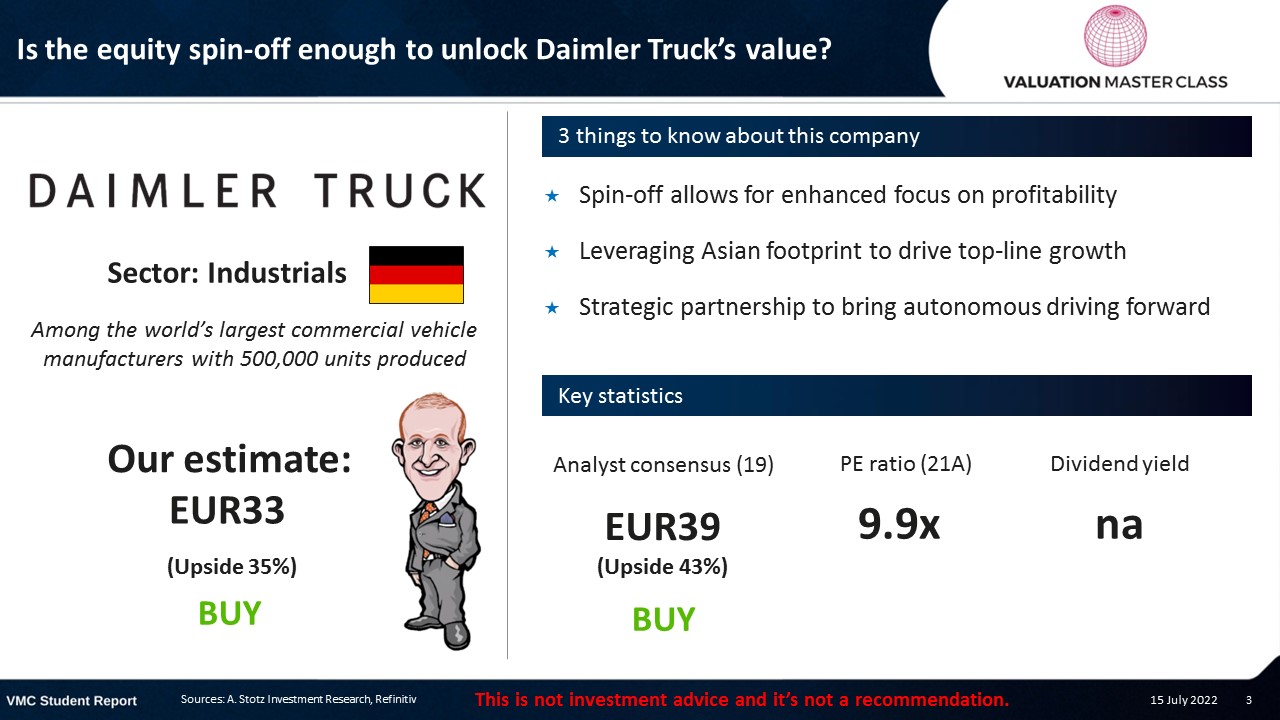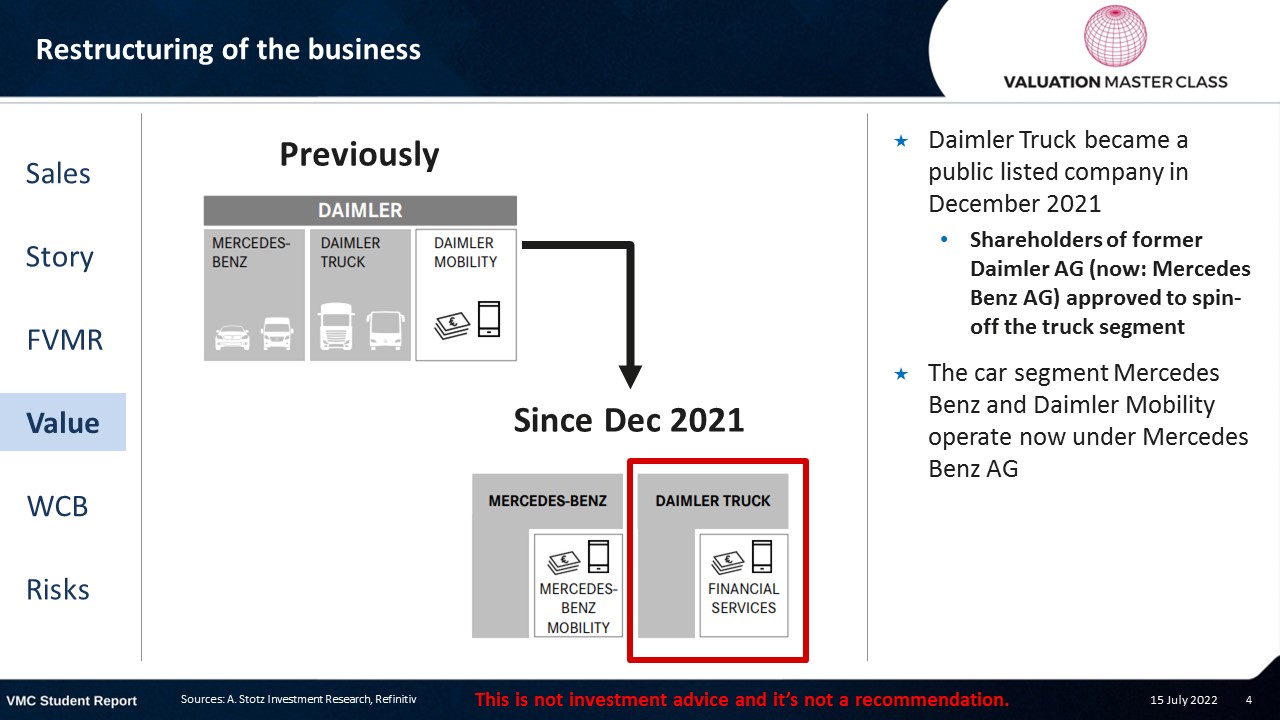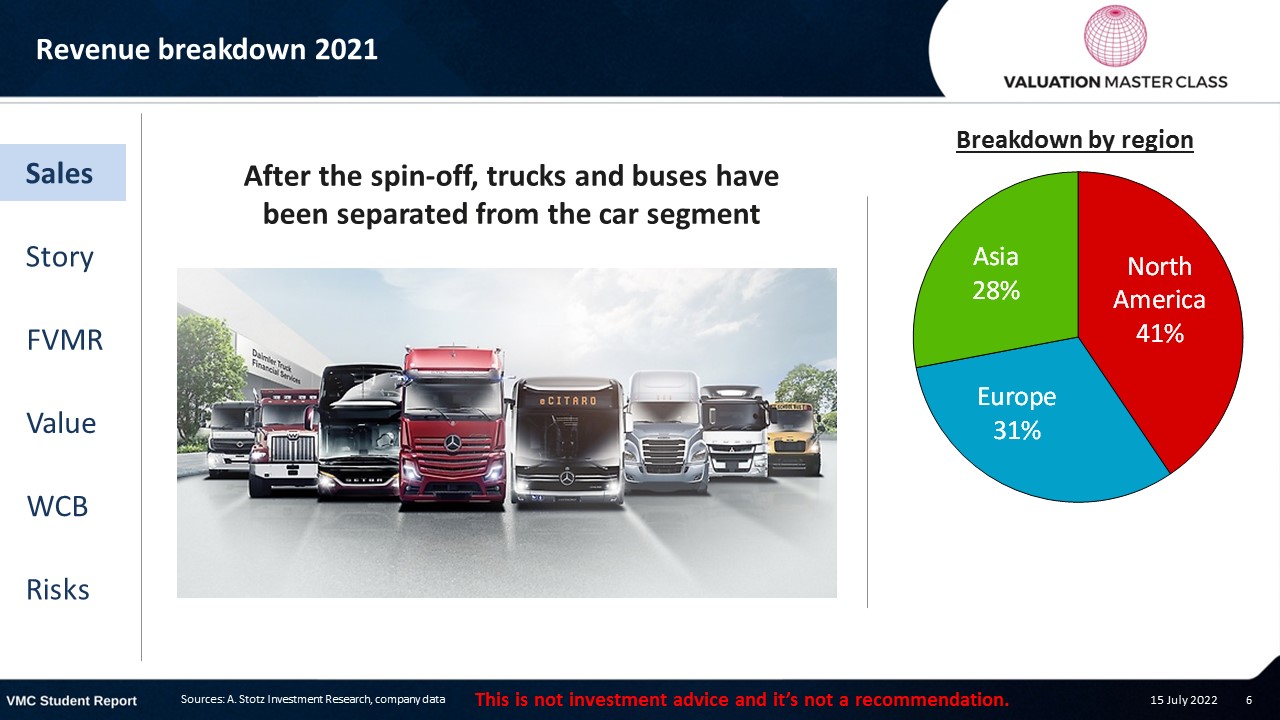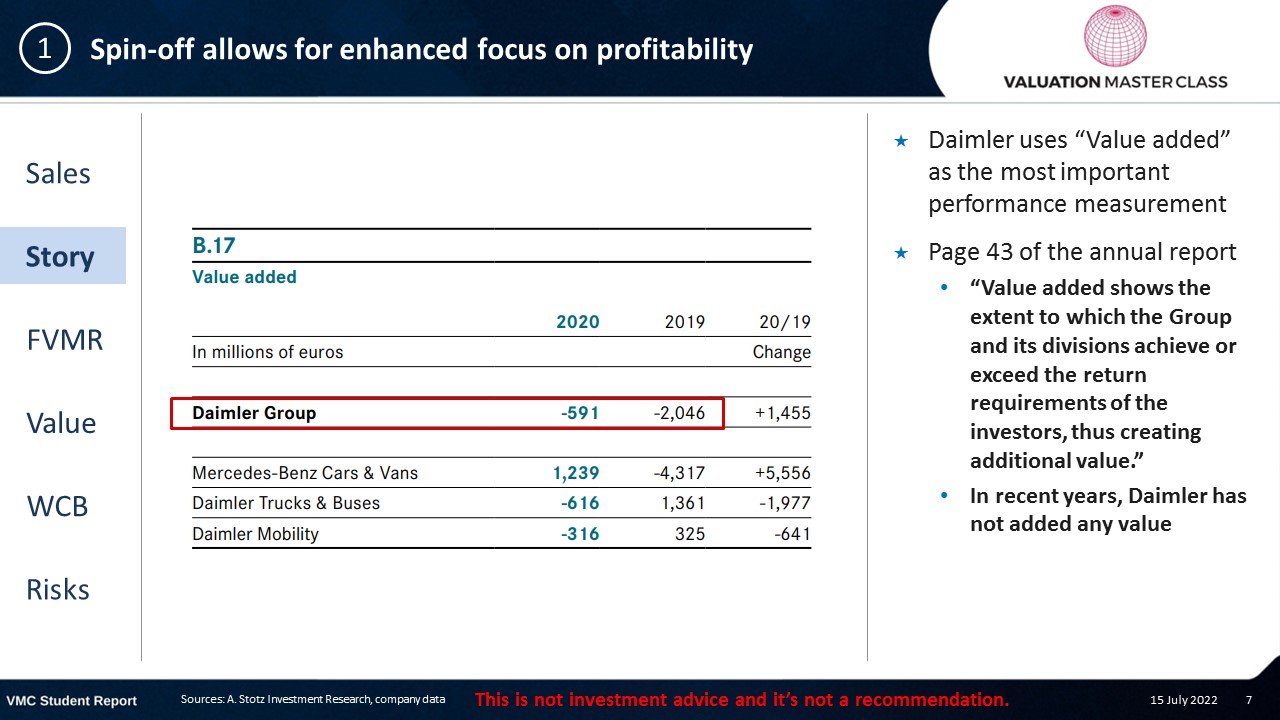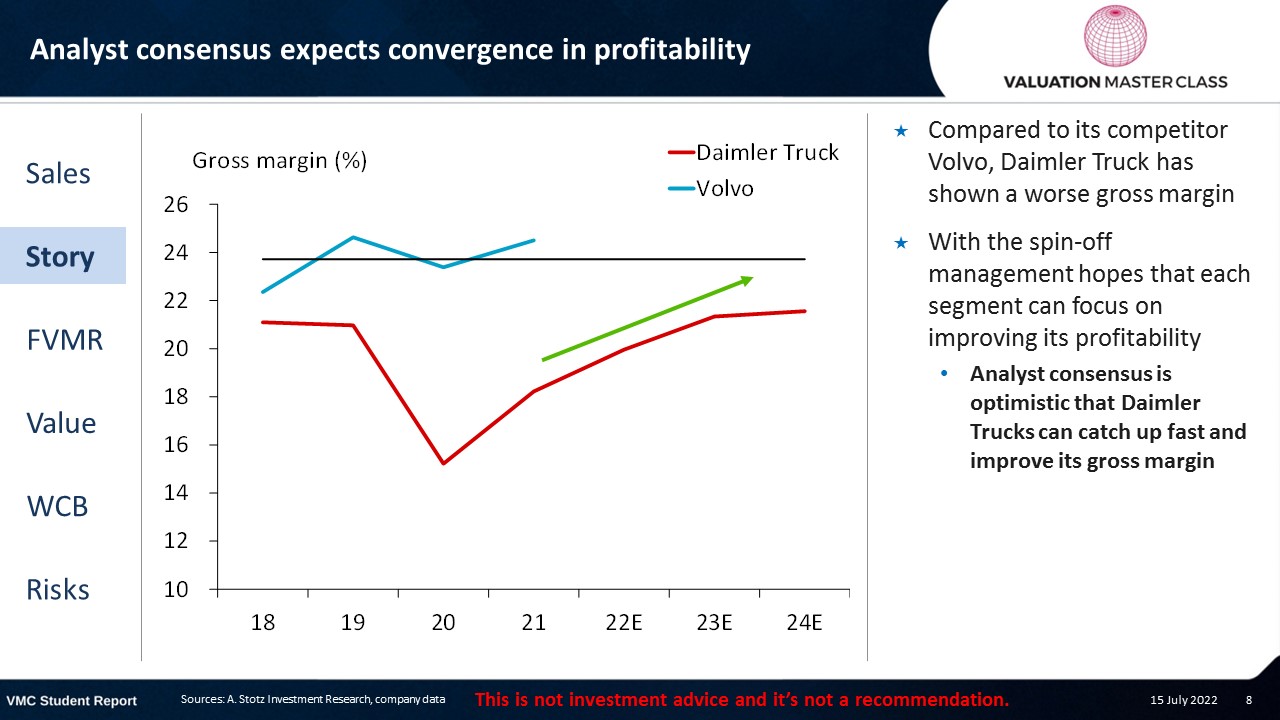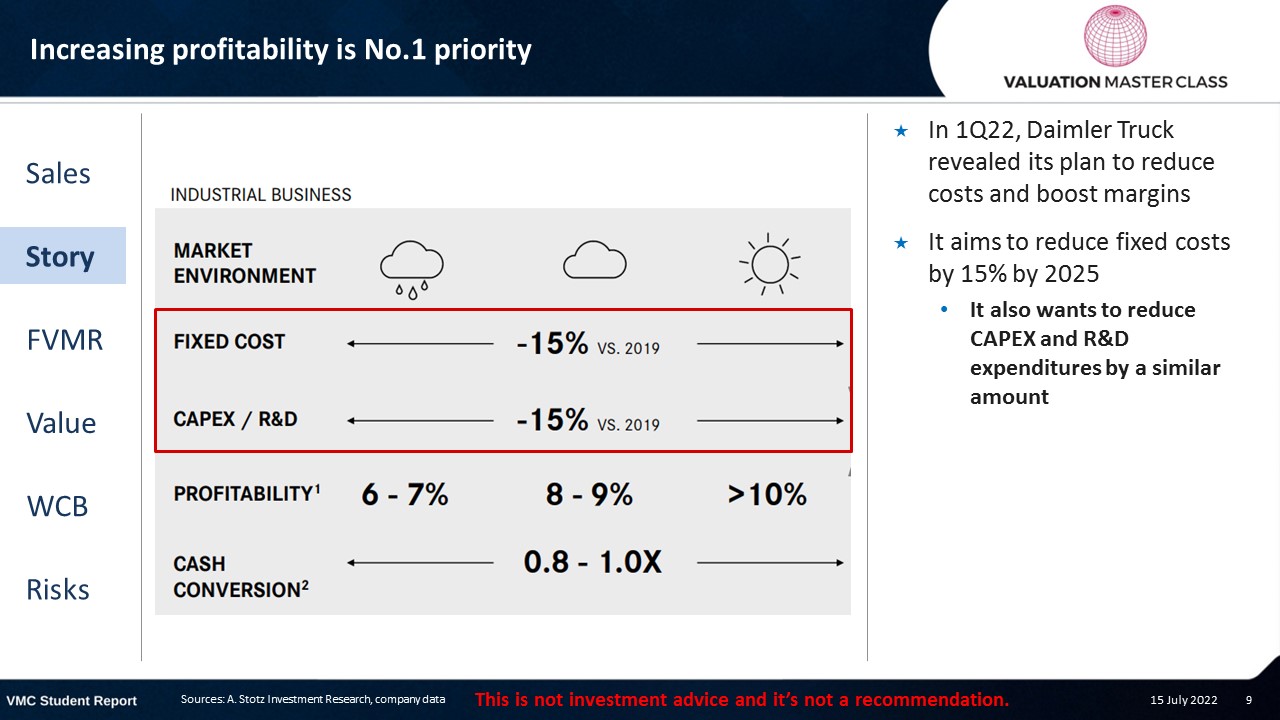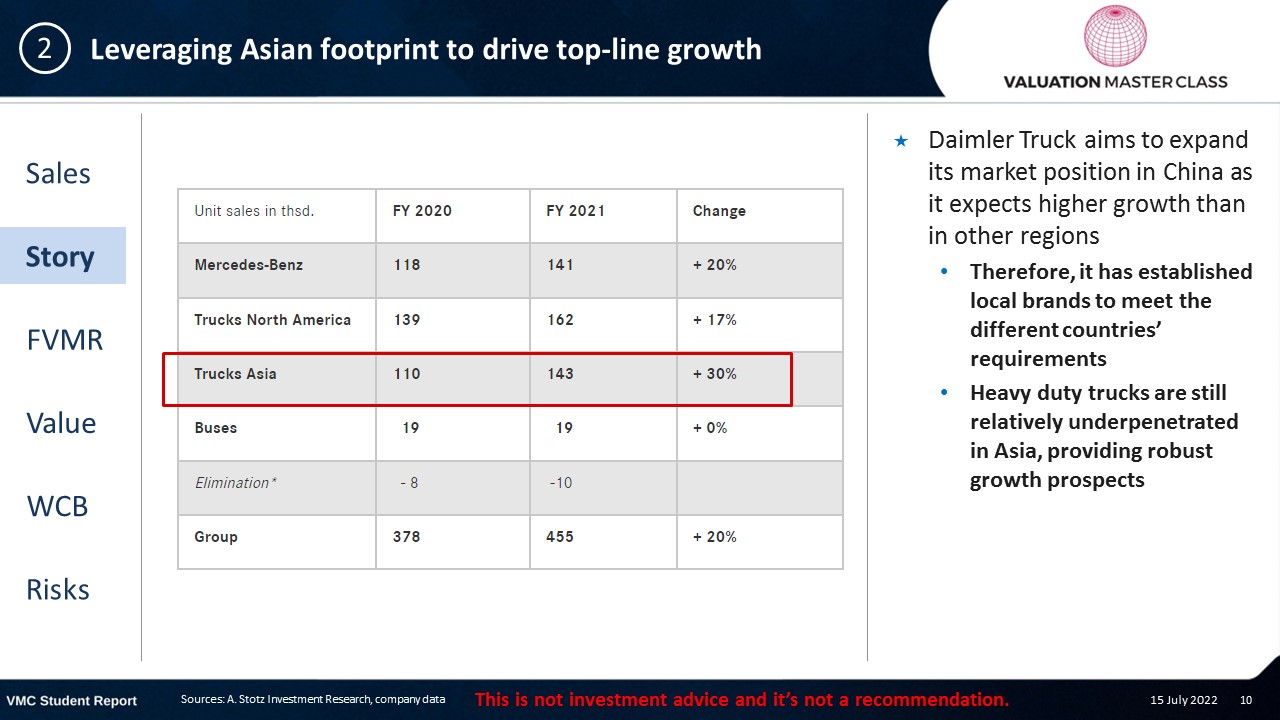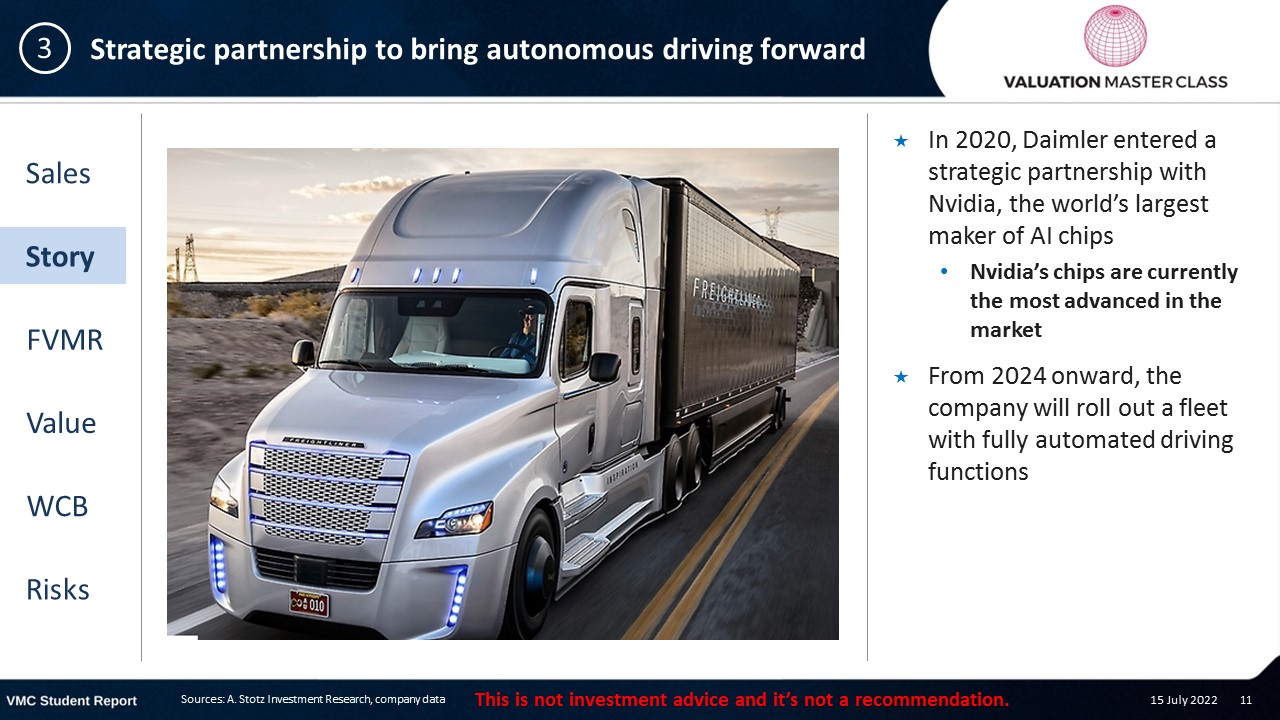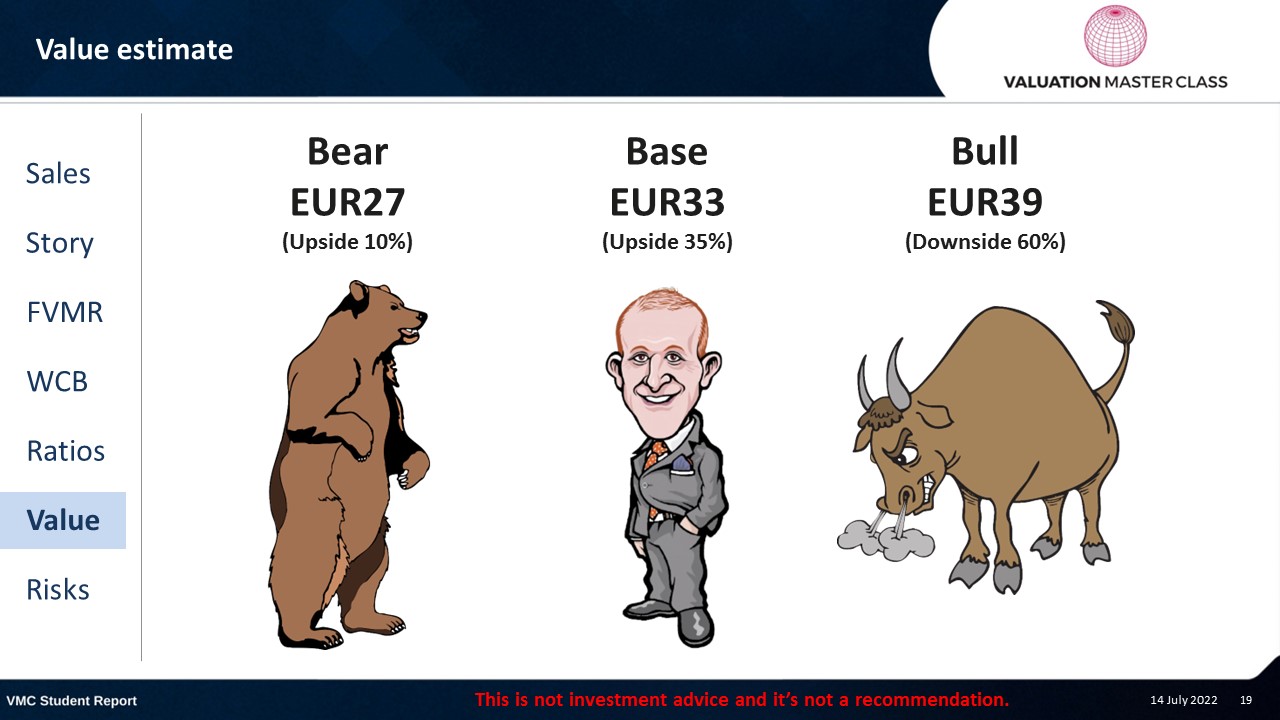Is the Equity Spin-off Enough to Unlock Daimler Truck’s Value?
The post was originally published here.
What’s interesting about Daimler Truck is that 99.9% of the shareholders approved the spin-off
Highlights:
- Spin-off allows for enhanced focus on profitability
- Leveraging Asian footprint to drive top-line growth
- Strategic partnership to bring autonomous driving forward
Download the full report as a PDF
Restructuring of the business
- Daimler Truck became a public listed company in December 2021
- Shareholders of former Daimler AG (now: Mercedes Benz AG) approved to spin-off the truck segment
- The car segment Mercedes Benz and Daimler Mobility operate now under Mercedes Benz AG
What is an equity spinoff?
- In an equity spinoff, a company decides to create a new entity out of its existing operating business
- The newly created shares are distributed to the existing shareholders (unlike in a carve-out where the company sells its share in an IPO and raises new capital)
- The idea is that two independent companies are worth more than the single entity
Revenue breakdown 2021
Spin-off allows for enhanced focus on profitability
- Daimler uses “Value added” as the most important performance measurement
- Page 43 of the annual report
- “Value added shows the extent to which the Group and its divisions achieve or exceed the return requirements of the investors, thus creating additional value.”
- In recent years, Daimler has not added any value
Analyst consensus expects convergence in profitability
- Compared to its competitor Volvo, Daimler Truck has shown a worse gross margin
- With the spin-off management hopes that each segment can focus on improving its profitability
- Analyst consensus is optimistic that Daimler Trucks can catch up fast and improve its gross margin
Increasing profitability is No.1 priority
- In 1Q22, Daimler Truck revealed its plan to reduce costs and boost margins
- It aims to reduce fixed costs by 15% by 2025
- It also wants to reduce CAPEX and R&D expenditures by a similar amount
Leveraging Asian footprint to drive top-line growth
- Daimler Truck aims to expand its market position in China as it expects higher growth than in other regions
- Therefore, it has established local brands to meet the different countries’ requirements
- Heavy duty trucks are still relatively underpenetrated in Asia, providing robust growth prospects
Strategic partnership to bring autonomous driving forward
- In 2020, Daimler entered a strategic partnership with Nvidia, the world’s largest maker of AI chips
- Nvidia’s chips are currently the most advanced in the market
- From 2024 onward, the company will roll out a fleet with fully automated driving functions
Consensus is bullish
- Almost every analyst has a BUY recommendation and believes that the spin-off allows for enhanced value creation
- Analysts predict stronger gross margins which are converging to competitors’ levels
Get financial statements and assumptions in the full report
P&L – Daimler Truck
- Strong rebound in revenue expected as demand for trucks is higher than supply given the current supply chain constraints
Balance sheet – Daimler Truck
- Net fixed assets increase slightly as no huge expansions are planned
- Daimler Truck has moderate-to-high leverage with a debt-to-equity ratio of 1x
Ratios – Daimler Truck
- The company announced to follow a 40% dividend payout policy with effect from January 2022
- I expect Daimler Truck to return to positive FCFF after it was negative in 2021
Value estimate – Daimler Truck
- In contrast to consensus, I expect that it takes longer for Daimler Truck to improve its margin
- I value the company by using FCFF and a terminal growth rate of 2%
Key risk is supply chain
- Ongoing supply chain disruptions create shortages (e.g., semiconductor chips) and increase production costs
- Failure to keep up with technological changes could result in loss of market share
- Labor shortage of specialist employees creates competition among car manufacturers
Conclusions
- Analyst might forecast drastic changes in fundamentals too early
- In the long run, it should be able to close the gap to competitors in terms of profitability
- Valuation does not look expensive
Download the full report as a PDF
DISCLAIMER: This content is for information purposes only. It is not intended to be investment advice. Readers should not consider statements made by the author(s) as formal recommendations and should consult their financial advisor before making any investment decisions. While the information provided is believed to be accurate, it may include errors or inaccuracies. The author(s) cannot be held liable for any actions taken as a result of reading this article.

